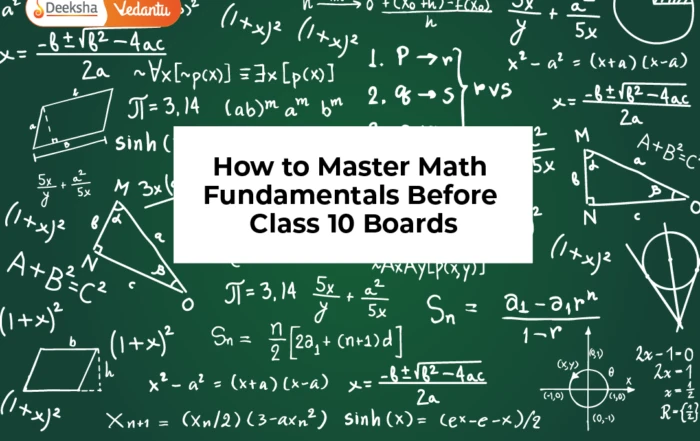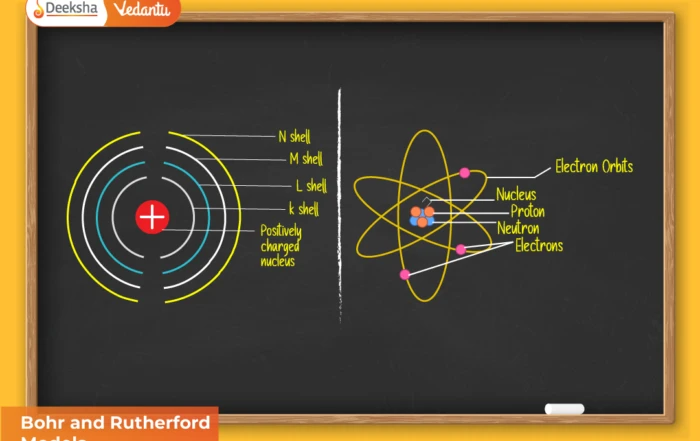
Introduction
The study of conic sections begins with a cone. A double-napped right circular cone is formed when a straight line (called the generator) rotates around a vertical line (axis) while keeping one end fixed, making a fixed angle with the axis.
When a plane intersects this cone, the curve of intersection is called a conic section. Depending on the angle and position of the plane, we get different curves – circle, ellipse, parabola, hyperbola.
Conic sections are everywhere: the paths of planets, the designs of telescopes, the shape of bridges, and the beams of headlights. That’s why this topic is so important in both Boards and competitive exams.
Formation of Conic Sections
Imagine a double-napped cone – one cone pointing up and another pointing down, joined at the apex (vertex). When a plane cuts this cone, the shape formed depends on the angle of inclination of the plane relative to the cone’s axis.
- Circle
- If the plane is perpendicular to the axis and cuts the cone parallel to its base, the section is a circle.
- Ellipse
- If the plane cuts one nappe at an angle to the axis (but not steep enough to cut both nappes), the section is an ellipse.
- Parabola
- If the plane is parallel to the generator of the cone, the section is a parabola.
- Hyperbola
- If the plane cuts both nappes of the cone at an angle less steep than the generator, the section is a hyperbola.
Thus, the type of curve is determined by the angle between the cutting plane and the cone’s axis.
Eccentricity (Key to Classification)
Conics can also be defined as the locus of a point moving such that its distance from a fixed point (focus) and a fixed line (directrix) are in a constant ratio, called eccentricity (e).
- Circle → e = 0
- Ellipse → 0 < e < 1
- Parabola → e = 1
- Hyperbola → e > 1
This provides a unified definition of all conics.
Mathematical Representations
- Circle: locus of point equidistant from a fixed point.
Equation: (x – h)² + (y – k)² = r². - Ellipse: locus of point P such that PF₁ + PF₂ = 2a.
Equation (standard form): (x²/a²) + (y²/b²) = 1, with a > b. - Parabola: locus of point equidistant from focus and directrix.
Equation: y² = 4ax (axis along x-axis). - Hyperbola: locus of point P such that |PF₁ – PF₂| = 2a.
Equation: (x²/a²) – (y²/b²) = 1.
Derivation Using Focus–Directrix Property
Let’s derive briefly how eccentricity leads to conics:
- Consider a fixed point F (focus) and a line D (directrix).
- A point P(x, y) satisfies: PF/PD = e.
Squaring and simplifying in Cartesian coordinates gives equations of different conics based on the value of e.
Detailed Classification
1. Circle
- e = 0
- Plane perpendicular to axis
- Equation: (x – h)² + (y – k)² = r²
2. Ellipse
- 0 < e < 1
- Plane cuts cone obliquely but not parallel to generator
- Equation: (x²/a²) + (y²/b²) = 1
3. Parabola
- e = 1
- Plane parallel to generator
- Equation: y² = 4ax
4. Hyperbola
- e > 1
- Plane cuts both nappes
- Equation: (x²/a²) – (y²/b²) = 1
Solved Examples
Example 1 (Board type)
Identify conic from eccentricity values:
(a) e = 0.
Answer: Circle.
(b) e = 1/2.
Answer: Ellipse.
(c) e = 1.
Answer: Parabola.
(d) e = 2.
Answer: Hyperbola.
Example 2 (JEE type)
Show that locus of point whose distance from (0, 0) is equal to distance from line x = 4 is a parabola.
Solution:
Let P(x, y).
PF = √(x² + y²), distance from directrix = |x – 4|.
Condition: √(x² + y²) = |x – 4|.
Squaring: x² + y² = (x – 4)² → y² = 16 – 8x.
Hence, parabola with focus at (0, 0), directrix x = 4.
Example 3 (KCET style)
Equation of ellipse with foci at (±4, 0) and major axis length 10?
Solution:
a = 5, c = 4 → b² = a² – c² = 25 – 16 = 9.
Equation: x²/25 + y²/9 = 1.
Applications
- Physics: Orbits of celestial bodies (ellipses), paths of projectiles (parabolas).
- Engineering: Reflectors, antennas, suspension bridges.
- Architecture: Elliptical arches, hyperbolic cooling towers.
- Exams: Direct formula-based problems, tangent-normal applications, and eccentricity-based locus.
Common Mistakes
- Confusing parabola (e = 1) with ellipse (0 < e < 1).
- Forgetting that circle is a special case of ellipse.
- Misidentifying orientation (e.g., parabola along x-axis vs y-axis).
Marks Allotment
- Boards: 6–8 marks (definition-based + simple derivations).
- JEE Main: 1–2 questions (eccentricity-based or locus-based).
- KCET/COMEDK: 2–3 marks direct formula questions.
- JEE Advanced: Conceptual, focus-directrix property problems.
Practice Problems
- Write eccentricity of circle, ellipse, parabola, and hyperbola.
- Derive equation of parabola using focus-directrix definition.
- A conic has e = 3/5. Identify it.
- Show that circle is a special ellipse with coincident foci.
- Prove that hyperbola has two branches.
- Derive equation of ellipse with centre at origin and major axis along x-axis.
- Find equation of conic with focus (0, 0), directrix x = –2, e = 1.
- Draw rough sketches of all conics.
- Show that parabola is limiting case of ellipse as eccentricity approaches 1.
- A conic has equation y² = 12x. Identify type and write focus, directrix, latus rectum.
FAQs
Q1. Which conic has eccentricity = 1?
Parabola.
Q2. Is a circle an ellipse?
Yes, circle is a special ellipse with equal major and minor axes.
Q3. What determines whether a conic is ellipse or hyperbola?
If e < 1 → ellipse; if e > 1 → hyperbola.
Q4. Do conics appear in JEE every year?
Yes, at least 2–3 questions (combined with tangents/normals).
Q5. Which conic is most important in KCET?
Parabola and ellipse, as they appear frequently in coordinate geometry.
Conclusion
The study of Sections of a Cone lays the foundation for understanding all conic sections – circle, ellipse, parabola, and hyperbola. By varying the angle and position of the cutting plane, we derive different curves, each with unique properties and applications.
Through the concept of eccentricity (e), we unify these curves under a single definition:
- e = 0 → Circle
- 0 < e < 1 → Ellipse
- e = 1 → Parabola
- e > 1 → Hyperbola
This classification not only helps in understanding the geometric nature of conics but also prepares students for deeper algebraic analysis in upcoming sections. Whether in CBSE boards, JEE, KCET, or COMEDK, the ability to quickly identify and work with conic sections is a vital skill for problem-solving.











Get Social